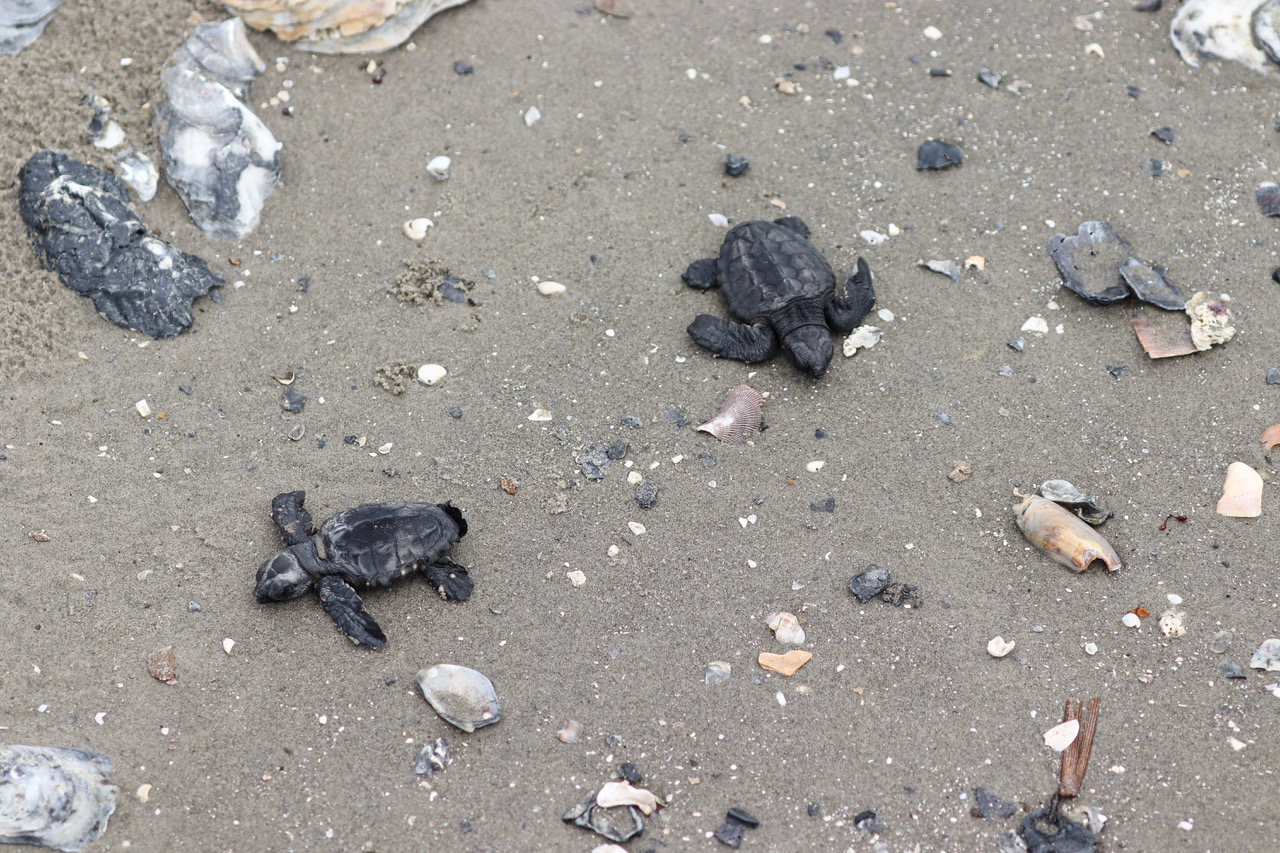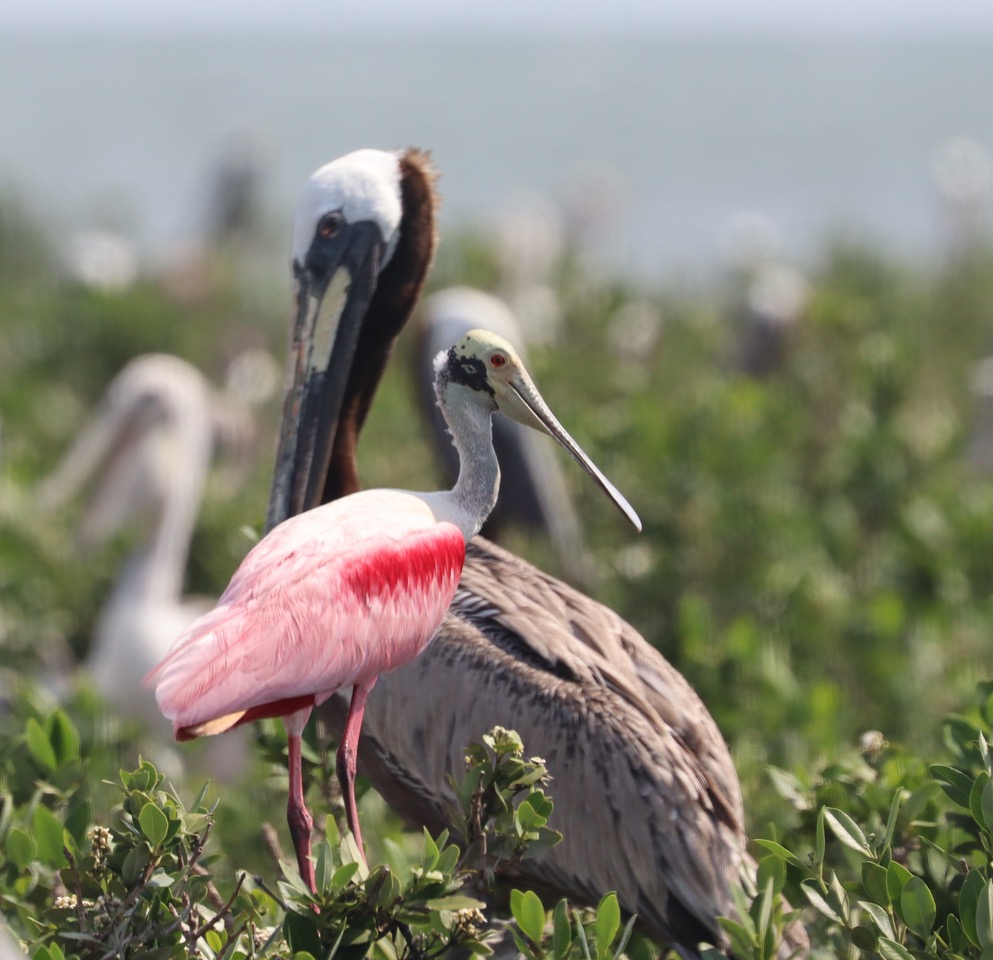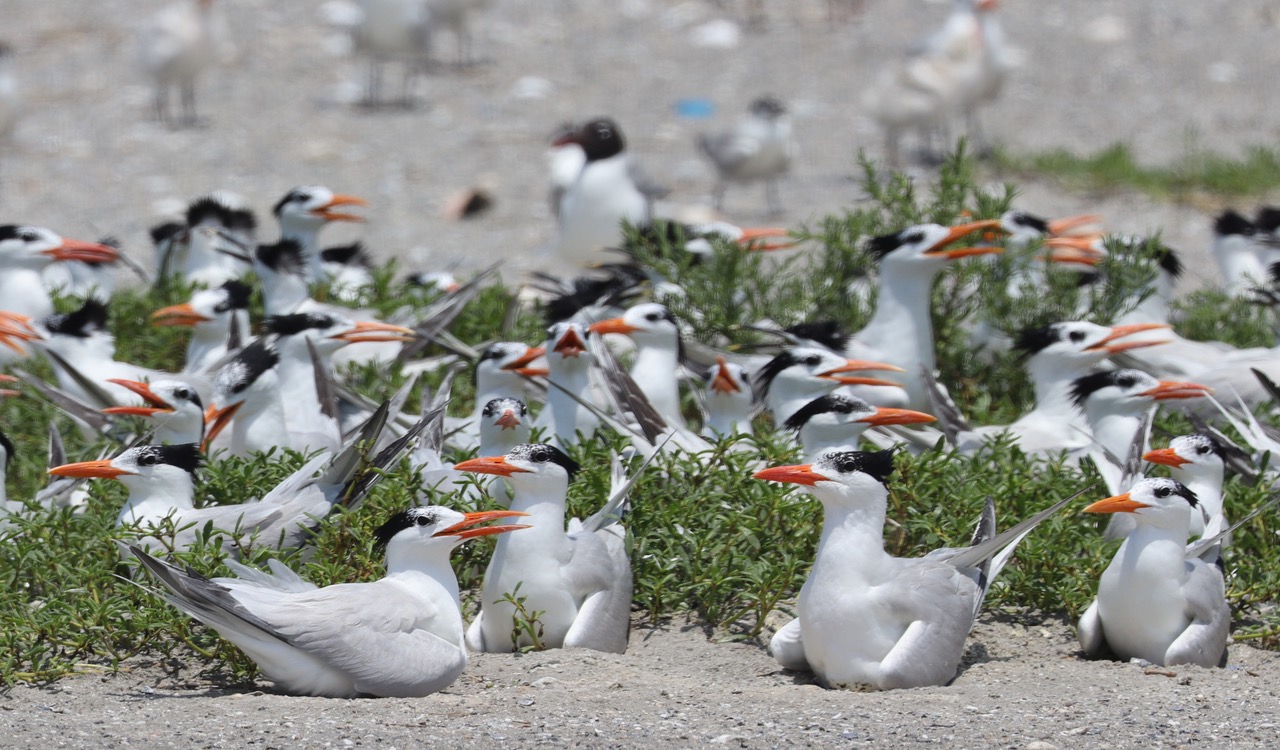Sign Up. Stay Informed.
September 13, 2023
Contact: coastal@la.gov

BATON ROUGE, La. – Officials from the Louisiana Coastal Protection and Restoration Authority (CPRA), the Louisiana Department of Wildlife and Fisheries (LDWF), and the United States Fish and Wildlife Service (USFWS) announced successful hatchings of the endangered Kemp’s ridley sea turtle for the second year in a row on the Chandeleur Islands.
The endangered species was discovered nesting on the islands in August 2022, marking the first time the species had been observed there in over 75 years. Since this discovery, over 100 sea turtle crawls have been documented on the island, making it one of the highest-density nesting beaches in the northern Gulf of Mexico.
“The recent observation of Kemp’s ridley hatchlings on the Chandeleur Islands illustrates the importance of the work CPRA and our partners are doing along the barrier island chain to restore vital nesting habitats,” said CRPA Chairman Bren Haase. “Restoring these barrier islands is not only necessary to protect the wildlife that call them home, but also to offer a first line of defense to inland communities that have suffered as the islands have deteriorated.”
The barrier islands along Louisiana’s easternmost point gained national prominence when President Theodore Roosevelt issued an executive order in 1904 creating the Breton National Wildlife Refuge, which includes the Breton Islands and Chandeleur Islands.
In the years since the area has been severely impacted by natural and man-made disasters. In 2005 a direct hit from Hurricane Katrina led to significant damage to the island chain. Five years later, the Deepwater Horizon oil spill decimated the wildlife and marine habitat, impacting turtles, fish, birds, and other species that rely on the islands’ resources.
While the USFWS believes that 89 percent of the refuge’s acreage has disappeared since President Roosevelt visited the area in 1915, efforts to restore the islands offer hope for the future.
“Breton National Wildlife Refuge will continue to serve the purpose for which it was originally established – to provide habitat for the conservation of colonial nesting seabirds and other wildlife,” said Neil Lalonde, Project Leader, Southeast Louisiana Refuge Complex. “On Breton Island, we’ve restored 426 acres of beach, dune, and back-barrier marsh habitat. Protecting and restoring these fragile and dynamic barrier islands provides countless benefits, not only for wildlife, but also for coastal communities as they form a first line of defense. Large-scale projects, such as this one, substantially contribute to restoring and protecting Louisiana’s natural resources and coastal wetlands.”
In addition to nesting habitats for endangered sea turtles, the Breton National Wildlife Refuge is the largest waterbird nesting location in the Northern Gulf of Mexico. Reddish Egrets and Sooty Terns are among the species that utilize the habitat provided by the islands to build their nests and rear their young. One endemic species, the Chandeleur Gull, utilizes the islands as their only nesting ground in the entire world.
While the island chain is an important nesting ground for many species, others use it as a winter escape. Each winter, tens of thousands of migratory birds including Piping Plovers, Red Knots, Redhead Ducks, and shorebirds visit the islands to take advantage of the seagrass meadows and warmer climate. In a typical year, in total, over 300,000 birds utilize the islands.
“The Chandeleur Islands are not only critically important to Louisiana and our state’s fish and wildlife resources; many of the species that rely on the habitats provided by the Chandeleurs spend a large part of their lives in other parts of the Gulf Coast – and beyond,” said Robert Shadoin, Secretary of the Louisiana Department of Wildlife and Fisheries. “Restoring these islands is not only important to making Louisiana whole following the Deepwater Horizon spill, it’s also important to making our region whole and protecting our valuable shared resources.”
Beginning in the summer of 2022, CPRA and LDWF began monitoring the Chandeleur Islands to inform a restoration strategy and project design.
“The recent discovery of endangered sea turtle hatchlings and the staggering numbers of birds that have been documented visiting and nesting along the Chandeleur Island Chain is encouraging,” said CPRA Executive Director Greg Grandy. “We have irrefutable evidence that life is flourishing on the islands, but we also know that it is fragile. Scientific modeling predicts that without major restoration efforts, the Chandeleur Islands will be under water in just a few decades. CPRA remains committed to working with our partners to protect these crucial habitats and the species that depend on them.”
Engineering and design plans for restoration efforts along the Chandeleur islands are already underway and are slated to be completed in 2025, at which time construction activities may begin. CPRA is working to identify a funding source for the construction of the project, which is expected to exceed $200 million.
###





